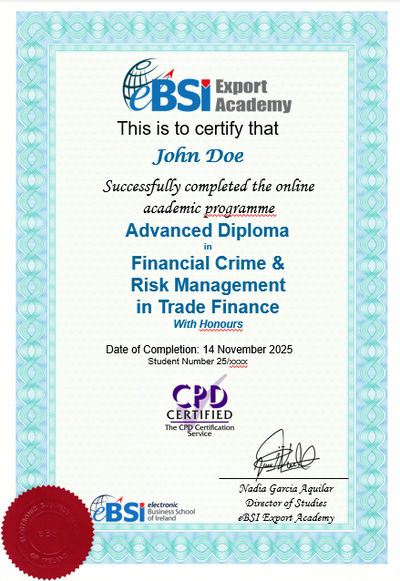Special Court of Malaysia Issues Judgment in Standby Letter of Credit

An irrevocable standby letter of credit (standby LC) can only be revoked or rescinded with the consent of the beneficiary. This judgment was given by Chief Justice Tun Abdul Hamid Mohamad who headed the five-man bench of the Special Court of Malaya in two related lawsuits.
In the first suit, Standard Chartered Bank (Malaysia) Berhad (SCBM) was the plaintiff and the former king of Malaysia, Yang Dipertuan Besar of Negeri Sembilan (Ruler of Negeri Sembilan, a state of Malaysia), Duli Yang Maha Mulia Tuanku Ja’afar Tuanku Abdul Rahman was the defendant.
The former king had applied for a standby LC from SCBM which was secured by a fixed deposit account. When SCBM sought to charge the account following a drawing on the standby, the former king sued for a declaration that it was not entitled to do so.
The Special Court, set up to hear cases involving members of the royalty in 1993 after amendment of the Constitution of Malaysia, sat for the first time to hear witnesses in a civil suit brought by a bank against a member of the royalty. In addition to the Chief Justice, the other distinguished judges were: Chief Judge of Malaya, Tan Sri Alaudin Mohd Sheriff; Chief Judge of Sabah and Sarawak, Tan Sri Richard Malanjum; and Federal Court judges Datuk Arifin Zakaria and Datuk Zulkefli Ahmad Makinudin.
The panel unanimously awarded the suit filed by SCBM against the former king with interests at the rate of 8% per annum from the date of this judgment and costs. In his judgment, CJ Tun Abdul Hamid Mohamad dismissed the former king’s counter-suit against the bank.
Factual Summary
The suit arose after the former king applied to SCBM on 5 February 1999 for a US$1 Million standby LC in favour of USbased Connecticut Bank of Commerce (CBC) for credit facilities to be extended to US- based company, Texas Encore LLC (TEC). The standby LC was subject to UCP500. It was advised through Standard Chartered Bank’s New York branch (SCBNY) on 12 February 1999 and was subsequently confirmed by SCBNY.
TEC, a company involved in the production of activated tire rubber, was to use the credit facilities to set up and operate a factory that was to be located within the compound of Ford Motors, in Detroit, Michigan, USA.
The former king undertook to provide funds to meet payments made by the bank under the credit, including all interest, commissions, charges, disbursements, and expenses. He also executed a Letter of Set-Off over a fixed deposit of MYR4.18 Million (about US$1.28 Million) owned by him as security for the standby LC.
In a letter dated 6 April 1999, the former king wrote to SCBM requesting that the standby LC be suspended. SCBM relayed the message by SWIFT on 16 April 1999 to SCBNY. The former king asserted that the loan by CBC to TEC for which the standby LC was issued had not been disbursed to TEC as of the date of request. There was no communication on the notice of cancellation by SWIFT either from SCBNY or CBC with SCBM until 15 December 1999.
On 15 December 1999, SCBM was informed by SCBNY that SCBNY had been given a notice of drawing on the standby LC for the purpose of retiring the loan given by CBC to TEC. On the same day, SCBM relayed the message to the former king.
The former king obtained an ex-parte injunction on 18 December 1999 restraining, inter alia CBC from making a call on the standby LC and also restraining SCBM from reimbursing itself from the fixed deposit of MYR4.18 million under the letter of set- off. SCBM was notified of the order on the same day. On 29 December 1999, the former king obtained an injunction order on the inter parte basis, on the same terms as the inter parte order obtained earlier.
SCBNY honored its confirmation by paying CBC US$314,772.44 on 22 December 1999 and US$685,000 on 24 December 1999. SCBM’s account with SCBNY was debited accordingly.
Legal Issues
1. Irrevocability: The standby LC was subject to UCP500. In the application form for the standby LC, it clearly indicated the standby LC was irrevocable and subject to UCP500.
The learned counsel for the former king argued that the UCP was not brought to the attention of the former king and that a copy should have been given to him, but was not given. The former king and his adviser had believed that the standby LC was revocable. The court disagreed with this argument and correctly quoted the relevant articles of UCP500 that the standby LC was irrevocable.
2. Estoppel: The learned counsel for the former king argued that estoppel was raised in two ways: First, SCBM having issued the notice of rescission on behalf of the former king on 16 April 1999, SCBM was estopped from recognising or accepting any call on the standby LC or from exercising any rights under the Letter of Set-off; Second, having remained silent for eight months without rejecting the notice of rescission, SCBNY as the agent bank of SCBM, and SCBM were estopped from recognising any call on the standby LC.
The court took the view that SCBM was very clear that the standby LC was irrevocable. Having considered the status of the former king and the sensitivity of the issue, SCBM agreed to assist by conveying the notice of rescission to SCBNY. It is not the law of estoppel to hold that someone is estopped merely because he obliges another person at the latter ’s request while at the same time he made clear his position on the issue which was to the opposite effect. The court also opined that silence by CBC did not amount to consent. It could not be imputed to SCBNY which was merely asked to convey the notice.
3. Injunction: The former king obtained an injunction order on 18 December 1999. Four parties were named as defendants: TEC; a TEC officer; CBC; and SCBM. The injunction order stated:
“1. that an injunction be and that is hereby granted to restrain the 3rd Defendant from calling or drawing upon the Standby Letter of Credit No. 312010325732-A dated 12.2.1999 in the sum of USD1 million established by the 4th Defendant in favour of 3rd Defendant as beneficiary thereof to retire off or pay any outstanding indebtedness due from the 1st Defendant.
2. that an injunction be and is hereby granted to restrain the 4th Defendant from uplifting or exercising any rights under a Letter of Set- Off executed by the Plaintiff ’s Principal over a Fixed Deposit of MYR4,180,000.00 in the name of Plaintiff’s Principal deposited in the Seremban branch of the 4th Defendant.”
The first part was to restrain CBC from calling or drawing upon the SBLC. The court would not consider the part involving CBC since it was not a party in these lawsuits. As for the second part, the order was to restrain SCBM from uplifting the Letter of Set-off. That had been complied with by SCBM and is the essence of these lawsuits. The court found no merit in the former king relying on the injunction order in these lawsuits.
4. Fraud: In his submission, the learned counsel for the former king also argued that the loan had never been released to TEC in November and/or December 1999 for US$1 Million and therefore the certificates of indebtedness dated 22 December 1999 and 23 December 1999 were false documents intended to defraud the paying bank.
The court was clear that when an LC was issued and confirmed by a bank, the bank must honour if the documents were on the face in order and complied with the terms and conditions of the credit. There would only be an exception if an “obvious fraud” or a “clear fraud” has been brought to the attention of the bank. A breach of contract between the buyer and the seller is insufficient ground for the bank to refuse payment.
In his Statement of Claim, the former king pleaded that, notwithstanding the notice of rescission, CBC proceeded to release the funds to TEC and/ or TEC’s officer sometime in or about November 1999. The court viewed that the parties were bound by their pleadings and rejected the submission to claim otherwise.
5. Judgment: The court allowed SCBM’s claim with interest at the rate of 8% per annum from the date of this judgment and costs and granted SCBM the liberty to set off the judgment sum against the fixed deposit pursuant to the letter of set- off. The former king’s claim was dismissed with costs.
Comments
The case is, in fact, simple but sensitive. In its judgment, the court quoted the relevant articles of UCP500 to allow SCBM’s claim. In summary, as the standby LC was irrevocable, it could not be revoked without all parties’ consent. An issuing bank or a confirming bank must honour its obligation to pay against a complying presentation. The judgment is encouraging and shows solid independent legal application by the judiciary in Malaysia.
This case underwrites the power of ICC Rules. Even if the applicant is a member of the royalty, the court did not allow the LC to be revoked on the applicants unilateral instruction.






